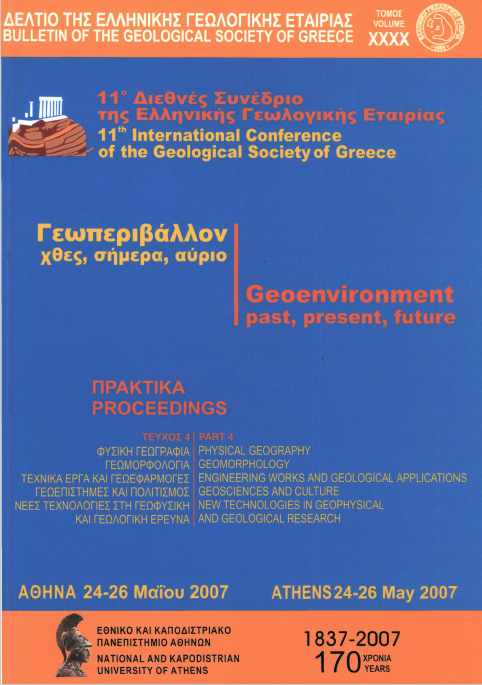Morphotectonic analysis of Heraklion Basin (Crete, Greece).

Abstract
In the present study, geomorphological, geological data and morphotectonic analysis were combined in order to investigate the relation between the tectonic activity and the geomorphology in the Heraklion basin (Crete). GIS techniques were used for mapping the various topographic, geological and tectonic features of the study area. The digital elevation model (DEΜ) of the study area was created. The slope angle and aspect maps were derived from DEM and combined with fault system orientation. The influence of tectonism on the development of drainage system was examined by the comparison of fault and stream directions. Moreover, geomorphic indices are useful tools in evaluating tectonic activity, relating the sensitivity to rock resistance, climatic change and tectonic processes with the production of a certain landscape. The applied geomorphic indices, in the present study, are the mountain front sinuosity index (Smf) and the valley floor width to valley height ratio (Vf). The fault zones of the study area are generally oriented N-S, NE-SW, NW-SE and E-W. According to the morphological analysis, steep slopes and sudden changes corresponding to the azimuth of the slope direction, are mainly related to N-S, NNE-SSW and NNW-SSE oriented faulting. The main channel directions of the drainage system are mainly controlled by faults striking N-S. The E-W, NE-SW and NW-SE general trending fault systems affect the low order streams. The Smf and Vf values are low, implying that the tectonic activity influences the morphology of the study area. The above methodology was proved successful to examine the impact of the tectonic activity in the study area.
Article Details
- How to Cite
-
Kokinou, E., Skilodimou, H. D., & Bathrellos, G. D. (2013). Morphotectonic analysis of Heraklion Basin (Crete, Greece). Bulletin of the Geological Society of Greece, 47(1), 285–294. https://doi.org/10.12681/bgsg.10950
- Section
- Geomorphology

This work is licensed under a Creative Commons Attribution-NonCommercial 4.0 International License.
Authors who publish with this journal agree to the following terms:
Authors retain copyright and grant the journal right of first publication with the work simultaneously licensed under a Creative Commons Attribution Non-Commercial License that allows others to share the work with an acknowledgement of the work's authorship and initial publication in this journal.
Authors are able to enter into separate, additional contractual arrangements for the non-exclusive distribution of the journal's published version of the work (e.g. post it to an institutional repository or publish it in a book), with an acknowledgement of its initial publication in this journal. Authors are permitted and encouraged to post their work online (preferably in institutional repositories or on their website) prior to and during the submission process, as it can lead to productive exchanges, as well as earlier and greater citation of published work.






